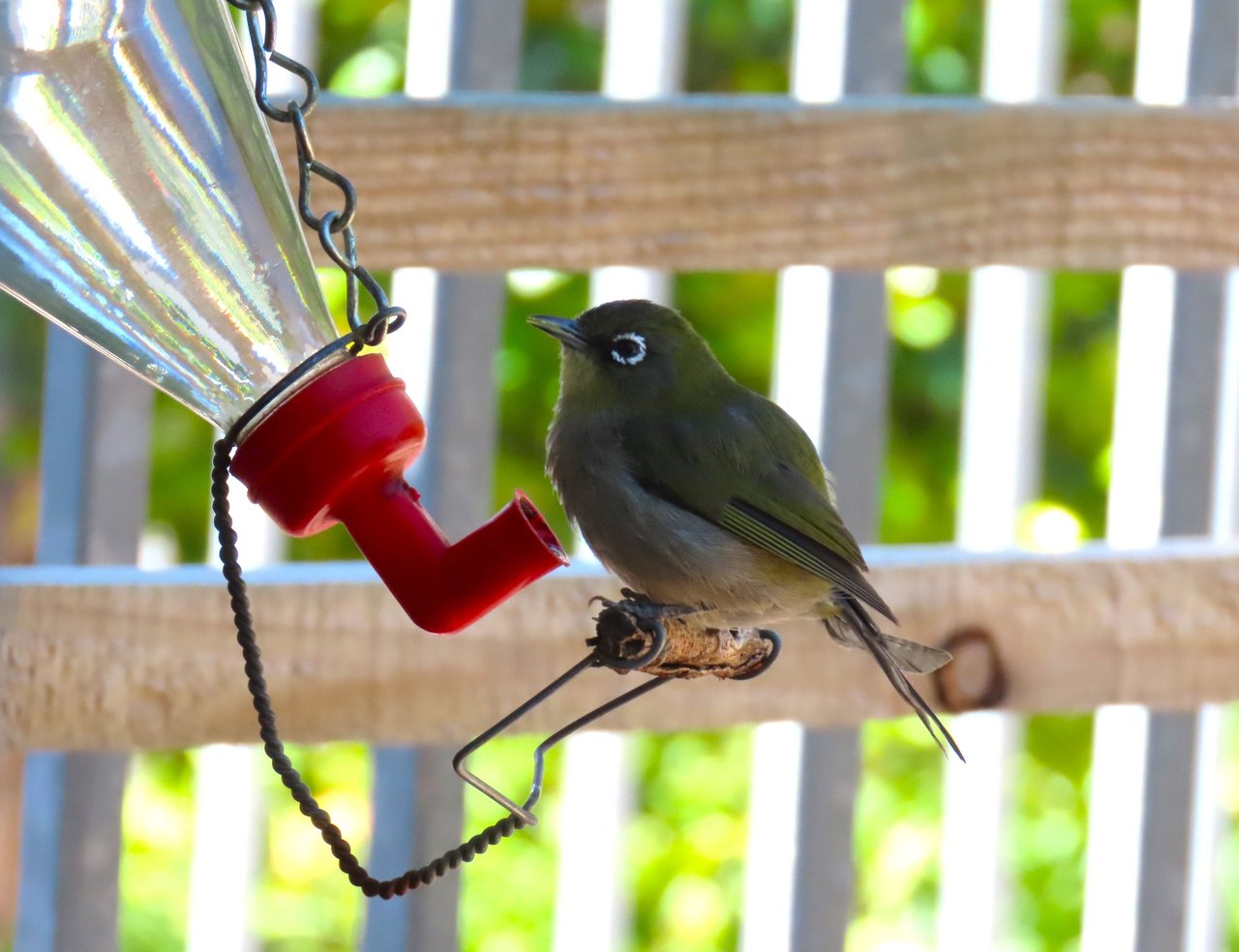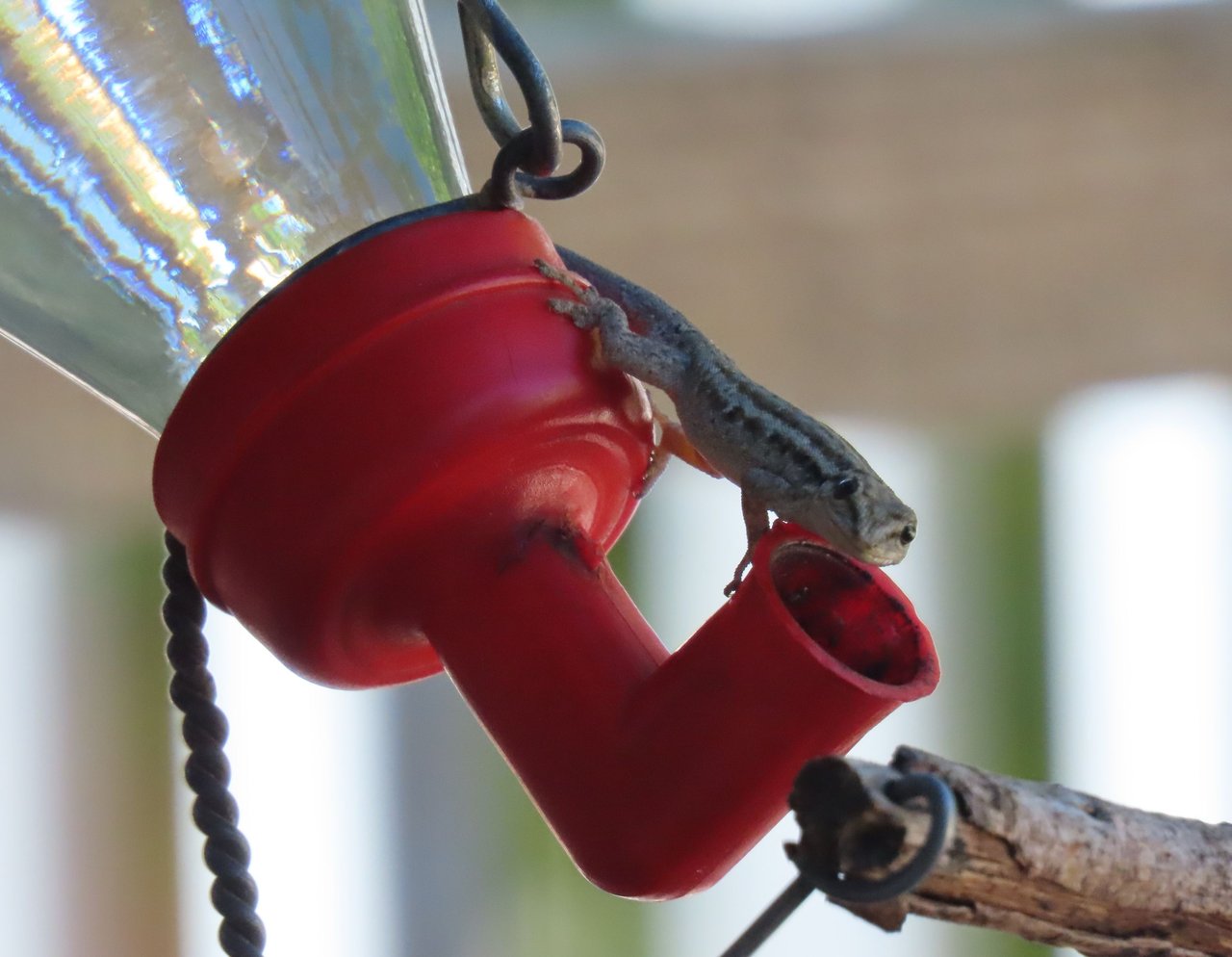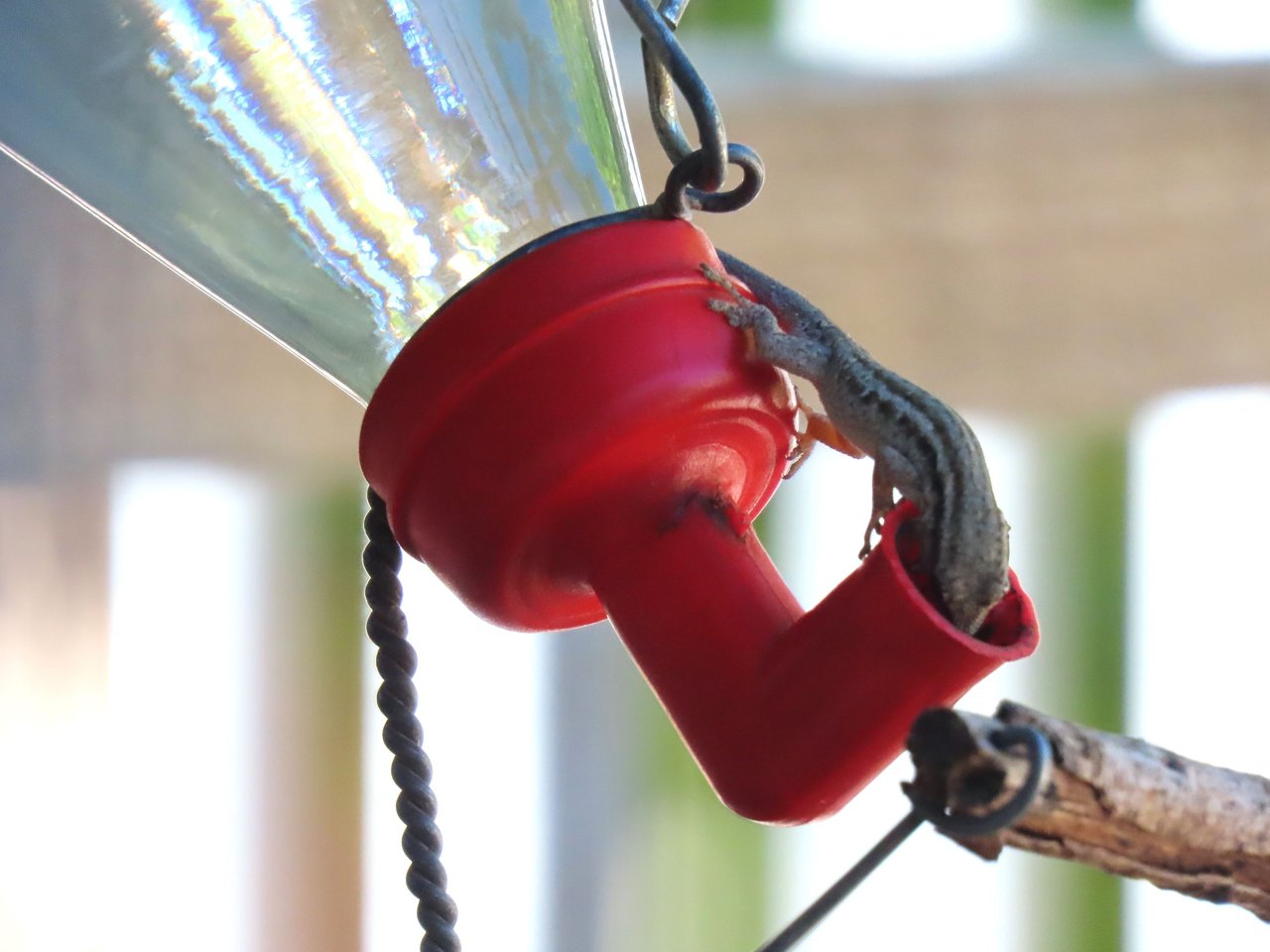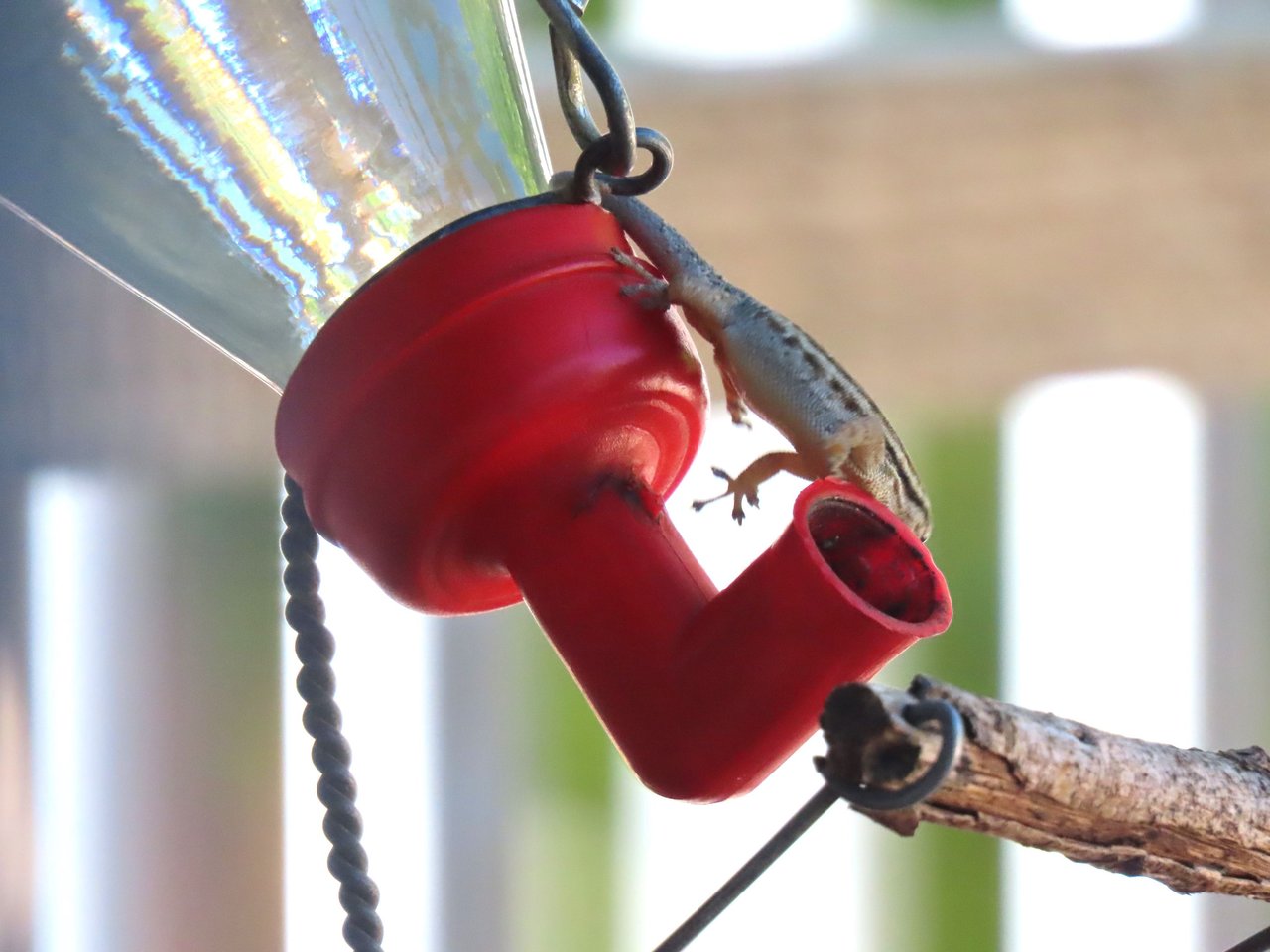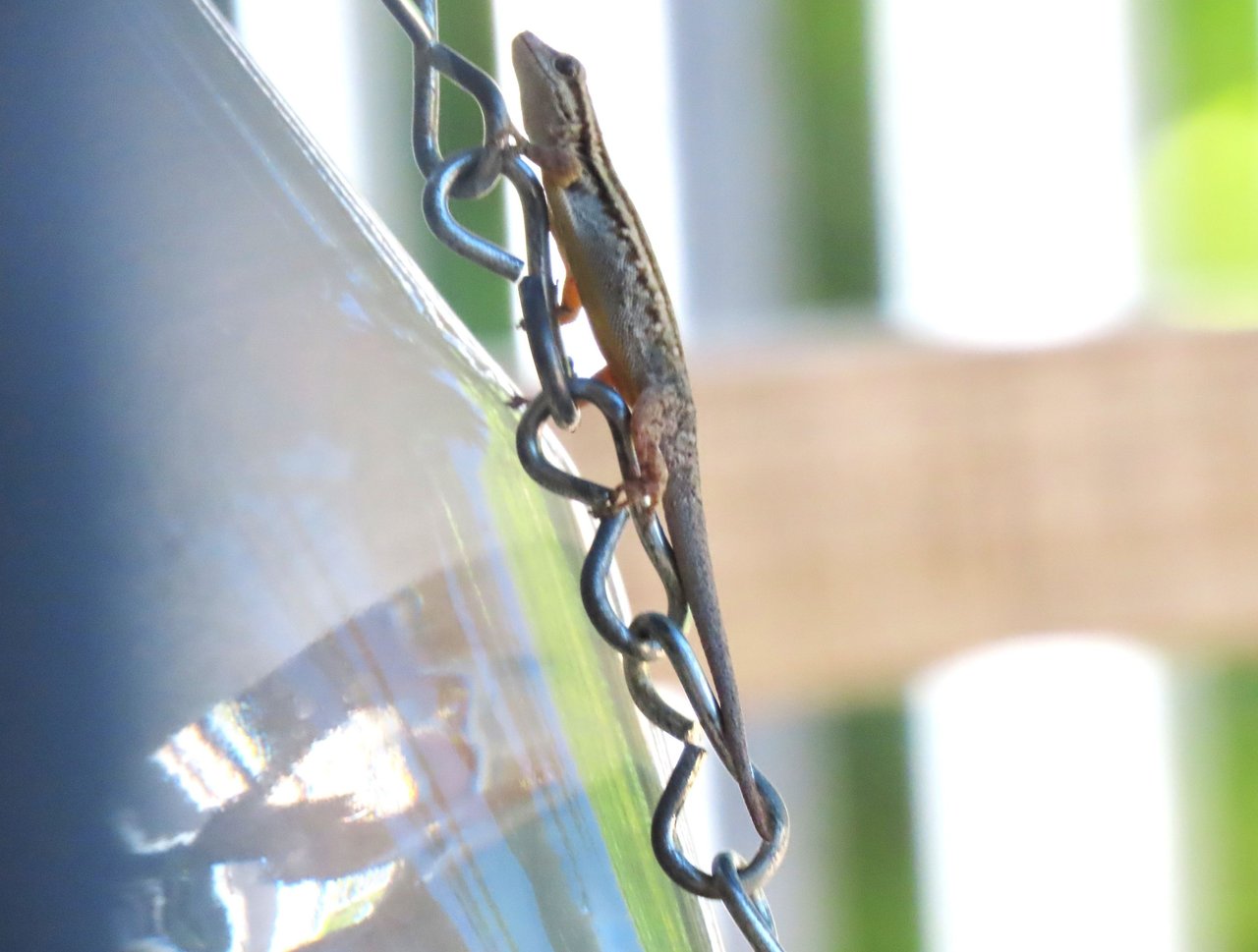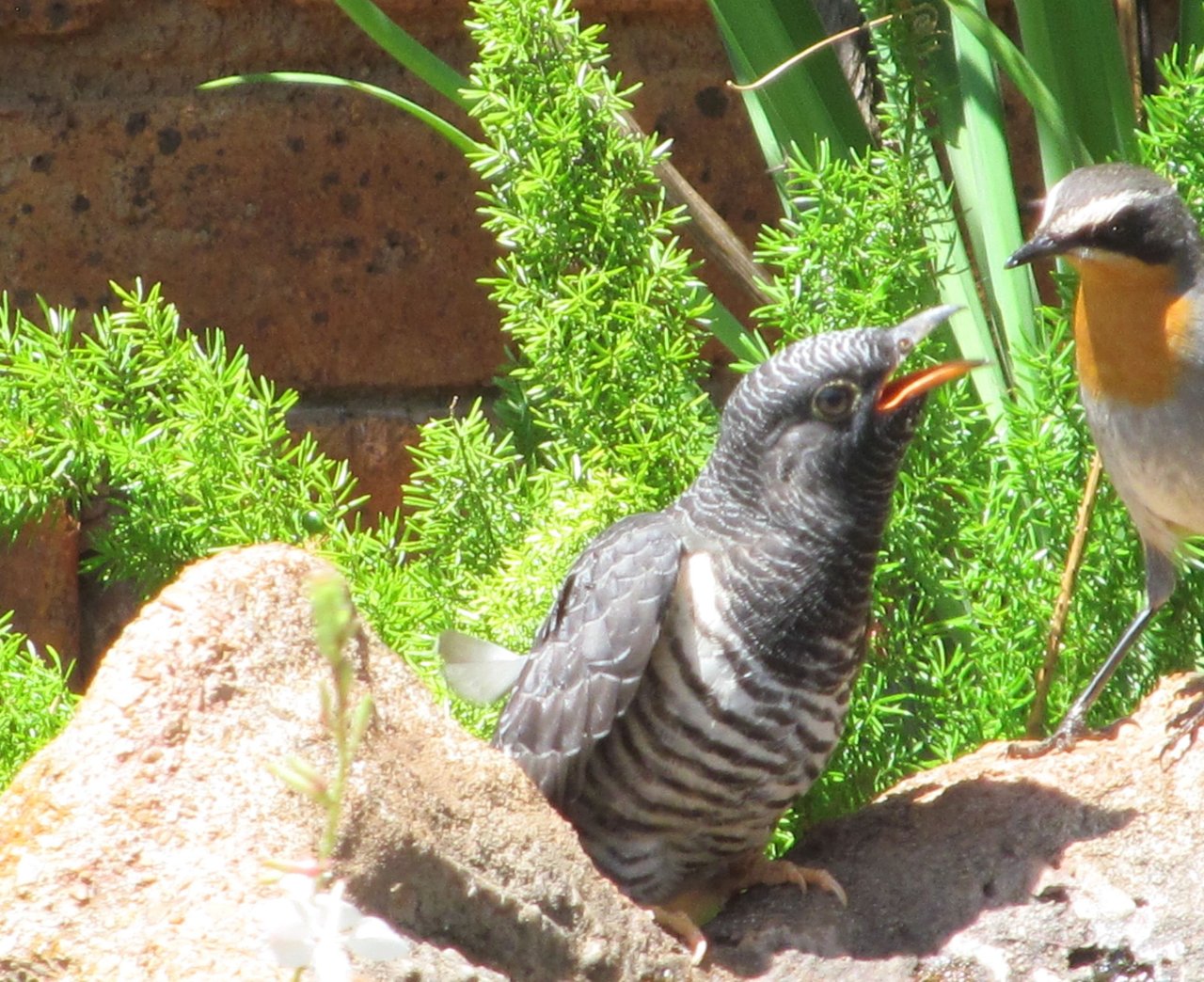This is not an ordinary bird post, as you will see something amazing.
The first photo in the post, is of a little Cape White-eye (Zosterops virens), popping in for a drink of cold fresh water. It must have been watching us replacing the water in the bottle.
Something else was also watching.
But now whoa! What was this? A lizard looking at me and saying. Hi cobber, would you mind if I take a drink?
By the way, I am not a lizard, as I am a Cape Dwarf Gecko, and this is my specie name (Lygodactylus capensis). Lygodactylus means flexible fingers.
Of course, I agreed and said, Go right ahead Flexi, and enjoy.
And to enjoy it he did, as it was a very hot day.
Right, he was done, and these guys are really fast movers. They have to be, as if a bigger bird landed on the water bottle, he would be a goner.
He used the water bottle chain as a ladder Lol.
Just to show you how I can see the water bottle here from my study window.
It was a first for me, as I have not seen a gecko, or any other lizard for that matter, drinking water before. Now I keep a closer watch on the water bottle, but nothing yet, as it hasn't returned.
To close the post I will show you another weird twist in nature. My father-in-law took this photo in his garden, and it is of a Robin feeding her "baby".
The baby is a Cuckoo, and the lazy cuckoo mother went to lay her egg in the robin's nest. So now the robin thinks that the baby is also hers. The amazing thing evident here is that birds cannot see the differences between their own babies and the intruders. The robin will continue to feed "her" baby cuckoo until it can fly, as then it will disappear.
I have seen this before when we stayed on an apple farm and in that case, it was the lazy wives of a Pin-tailed Whydah. The females all went to lay their eggs in the nests of other birds. Other female species of birds also do this.
So there are many step-moms in nature Lol.
In fact the habit is called Brood Parasitism.
Brood parasitism is a subclass of parasitism and phenomenon and behavioural pattern of certain animals, brood parasites, that rely on others to raise their young. The strategy appears among birds, insects and fish. The brood parasite manipulates a host, either of the same or of another species, to raise its young as if it were its own, usually using egg mimicry, with eggs that resemble the host's.
So there you have it and I hope that you have enjoyed the pictures and the story.
Photos by Zac Smith, except the last one-All Rights Reserved.
Camera: Canon PowershotSX70HD Bridge camera.
Thank you kindly for supporting this post.
